Extension Cords, what would we do without them? Well I guess we would be using cordless tools or each corded tool would have a very long cord. No matter where you go you are sure to find an extension cord. You can see them at your job, a job site, in your home, pretty much anywhere. With electricity and power cords being such as big part of our life, we need to fully understand them. We use them all the time, but how much do we really understand about them. We decided to create an extension Cord Tips and Tricks information page for everyone. In this article we are going to talk about the types of cords, how to store them, ratings and connections. So let’s get started.
Types of Extension Cords
- Indoor – Used for indoor use only, they are not as rugged as outdoor cords. Can not be used outside. An indoor jacket is not as durable. The jacket is the cover that protects the actual wires in the cord.
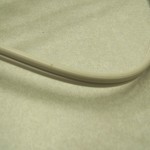
- Outdoor – Designed for outdoor, but can be used inside. Jackets are a lot more durable.
- Hint – You might see two identical extension cords, but a big difference in price. Check the cord. Some outdoor cords have a better jacket that hold up better against certain chemicals, sun light, weather and more. Decide how your cord will be used. If you will be using the cord a lot, pay a little more as they can handle more abuse.
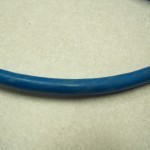
There are three types of prongs
- 2 Prongs – Can be used in three prong outlets. Designed for smaller items like lights.
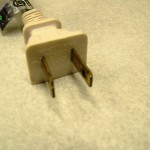
- 3 Prongs – Third prong is a ground. Use only with other three prong outlets or extension cords.
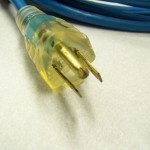
- Specialty Prongs – 220V have a different prong. There are also prongs that twist and lock into place. 2 and 3 prongs are the most common.
Some extension cords have different features:
- Built in GFCI – A breaker that automatically shuts power off in the event of ground fault and overloads.
- Lighted Plug – End of the plug lights up to show there is current.
- Multiple Sockets – Can plug more than one tool into the cord.
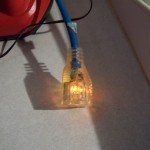

Extension Cord Ratings
| Cord Length (ft.) | Gauge | Max Amps |
| 25 | 18 | 10 |
| 25 | 16 | 13 |
| 25 | 14 | 15 |
| 50 | 18 | 5 |
| 50 | 16 | 10 |
| 50 | 14 | 15 |
| 75 | 18 | 5 |
| 75 | 16 | 10 |
| 75 | 14 | 15 |
| 100 | 16 | 5 |
| 100 | 12 | 15 |
| 125 | 16 | 5 |
| 125 | 12 | 15 |
| 150 | 16 | 5 |
| 150 | 12 | 13 |
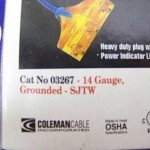
Extension Cord Markings
| Letter | Value |
| S | Flexible cord designed for general use |
| W | Outdoor use |
| J | Uses standard 300 Voltage insulation. If no “J”, it’s a heavier cord designed with 600 Volt Insulation |
| P | Parallel Wire Construction |
| T | Jacket made from vinyl thermoplastic |
| E | Jacket made from thermoplastic elastomer rubber |
| O | Cord is Oil Resistant |
** You will also see markings like 16/3. The first number is the wire gauge and the second number is conduction’s inside. So a 16/3 is a 16 gauge wire and has 3 conduction’s inside.
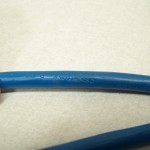
Storing Extension Cords
You always want to store your extension cord in a dry location and away from direct sun light. You also want to make sure they are out of the way, so yourself or others will not step on them as that will ruin the cord in the long run.
When you store your extension cords, you should roll them up. It does take a little extra time, but you will not have the frustration when you need them next time. Below are two common ways to store your cords when not in use. There are a lot of other ways, but here are just two. The Velcro can be purchased at your local hardware store. I believe I got these strips for about $4 and there were 40 in the box. The other way is to wrap the cord around itself. I prefer this way the best.
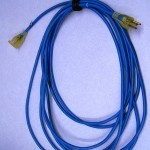
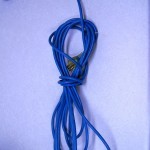
Attach Extension Cords
When you hook one extension cord into your tool, you want to make sure they are secure. If not you will become frustrated when they keep coming apart. Below are a couple of ways to attach each of them
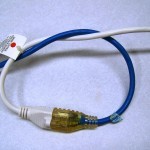
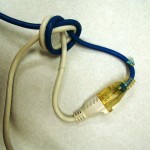
The two ways below are great for when your power tool has a very short cord and the two methods above will not work. The one right below is called a square knot. If you watch the video, you can see how this works.
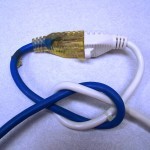
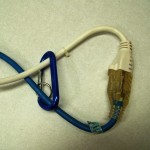
How to Roll an Extension Cord
The easiest way to see this is by watching the video below.
Extension Cord Tips and Tricks
- Always selects a cord with a higher power rating than the tool you will be connecting it to. If the tool has a higher amp rating than the cord you could damage the tool and start a fire.
- Do not use a cord longer than what you need. If you only need 25′, do not use a 100′ cord. Using a longer cord than needed can affect performance as you have power loss over a longer run.
- Wire gauge is a measure of the diameter of the wire inside – Large diameter can handle more current.

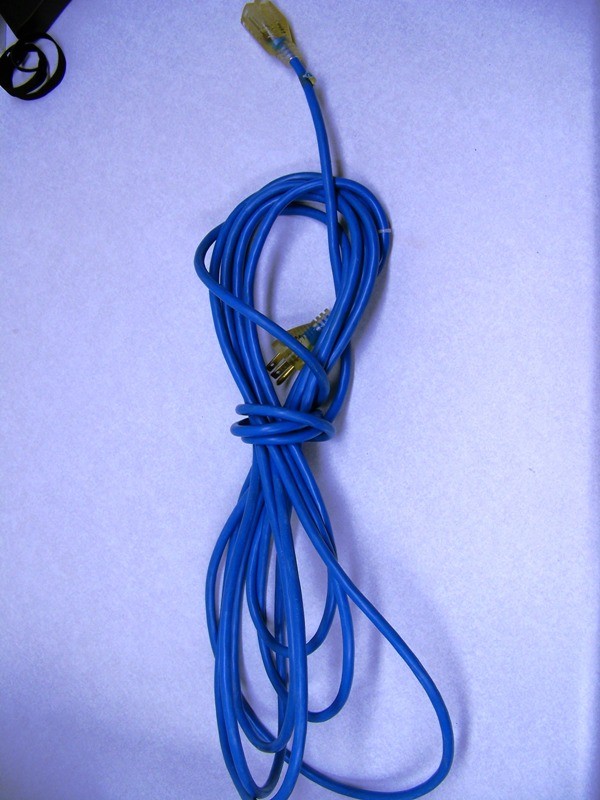

Very informative
Thanks for the info. I was surprised at the cost of the first quality cord I bought years ago, but it was worth it.
You might add to the third bullet at the end that smaller wire gauge numbers mean larger wires.
Good point and thanks for the feedback.
Great info thants for the run down and the charts.
Thanks for the feedback. We found that chart very helpful also
I very rarely purchase a cord under 12ga. and I should point out that joining 2 cords together, the first picture puts alot of strain on the plug ends when it’s pulled snug, I try to use the second picture or the square knot. and just out of curiosity, what is your take on crocheting a cord? good or bad?